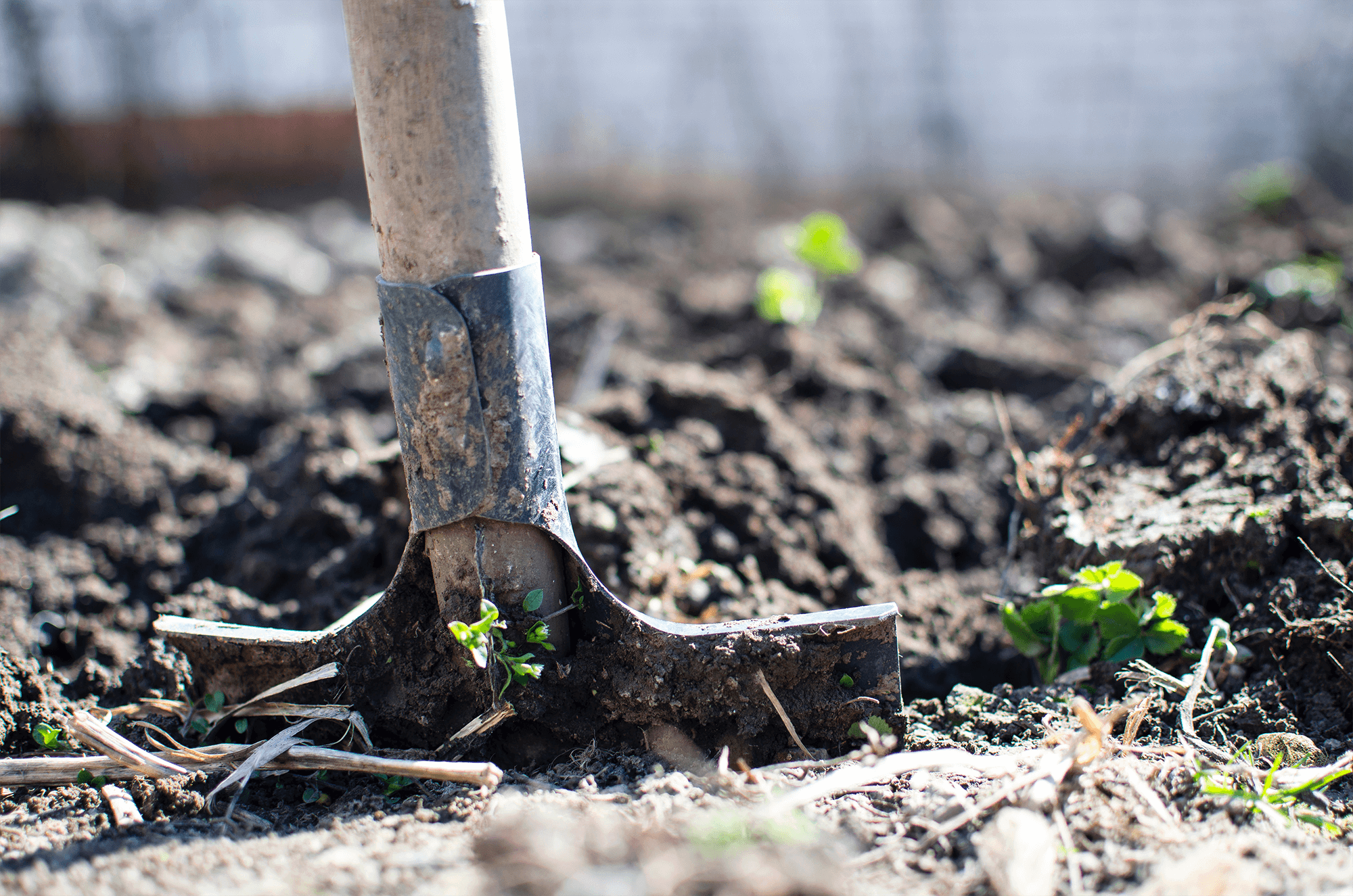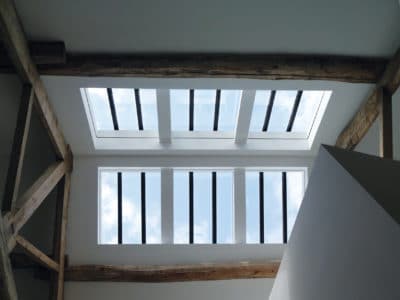Soil Surveys Explained
There are a range of surveys available to determine the conditions on your building plot and whether there’s any risk in constructing a house there.
You can have a professional inspect any existing structures, tree and plant growth, contours of the land, provision of services, neighbour issues, access and overhead cables – but the only solution that will tell you what’s in the ground itself is a soil survey.
It’s by no means essential to have this investigation – in fact, most self builders choose not to – but doing so will help you to accurately budget for your project’s groundworks.
There are various approaches to this analysis, all providing a really good indication of what type of soil strata exists on your site. The findings will let you know if any specialist foundation work is needed.
So, if you have the tests done before exchanging on the sale, then any bad news from the result will offer you an opportunity to renegotiate the cost of the site with the vendor or even not proceed with the purchase.
Here I’ll be taking a look at how these surveys work and what the results could mean for your project.
How do I carry out a soil survey?
On big commercial sites where large structures will be built, there are some sophisticated and very expensive soil investigation techniques used. These include mechanical augers, sampling shells and rotary and core drilling.
But for domestic projects, the process will usually be confined to small hand or mechanical augers, and possibly investigations at the base of a trial pit.
Work is usually carried out by a geotechnical engineer, but some structural/civil engineers will also provide this service, as will specialist land survey firms. Samples will be investigated in a laboratory to confirm the type of soil and its strength.
To an experienced eye, a basic trial pit provides good visual evidence of what strata (layers of earth beneath the surface) are present and the broad classification of these.
For a more scientific assessment, trial pits of 1m-2m depth will allow the engineer to take samples. They’ll use penetration or vane tests to record compressive and shear strengths in the low strata.
For the former, a penetrometer applies a controlled weight in equal blows to a metal rod to see how far it can go into the soil, which will record the compressive strength of the soil.
The vane test involves using a different mechanical instrument, which screws a steel vane into the earth and records the pressure it takes to rotate at a certain depth; this indicates the shear strength of the soil.
If getting these machines onto site isn’t possible, an engineer can carry out an investigation by hand. Here a 150mm-200mm diameter auger is wound into the soil to get samples.
If the ground is particularly hard, or greater depths are required, a small mechanical auger may be needed. The specimens are then assessed in the lab for classification and type.
Other findings
The level of the water table is vital information if you’re considering building a basement, as water pressure is a major consideration.
Evidence of high water tables should be obvious, but it can be affected by seasonal conditions, meaning the engineer needs to make a judgement according to the time of year.
If you find tree roots below ground, this could mean changes to your plans. Where the soil has potential to change in volume (eg shrinkable clay) appropriate measures can be put in place for cutting back and/or removing trees as necessary.
An engineer can also identify any site contamination, both by seeing if there’s any vegetation die back and through lab analysis of samples collected in areas where suspected contamination might exist.
Foundation design
Once they know the soil type and strength, the geotechnical engineer can then recommend if any changes are needed to your foundations.
In the absence of detailed soil information, the default solution for new houses is 1m deep mass concrete below all loadbearing walls – but the risk is you encounter unexpected issues when already on site, potentially adding delay and cost.
If more stable soil conditions, such as rock or dense chalk, are encountered, you might not need to go as deep. But if poor compressive soils are present, you’re likely to need deeper excavation or may have to change the type of foundation used.
How much will the soil survey cost?
A geotechnical engineer might undertake penetrometer and vane tests for anywhere between £750-£12,500, with the cost of a machine and driver potentially another £200-£250 on top of that.
An engineer carrying out a hand augered exercise (with no trial pits) might need a whole day on site and, together with their report, could charge £1,000-£1,500.
Specialist firms with larger corporate structures may put cost anywhere between £1,500-£3,000, with all of the above subject to VAT.
Soil analysis in laboratories may add a few hundred pounds to your project, depending on the number of samples and who is placing the order. Most engineers will carry out their own tests or have an established connection to a favoured facility.
To keep costs to a minimum, book a local JCB driver to dig trial pits (for usually only a few hundred pounds) before bringing the surveyor in.
Depending on the nature of the ground, you might dig down to 2.5m-3m. To enable someone to get into the base of the pit, temporary shoring (support) will normally be needed, which will bump up costs.
Remember to excavate close to where you will dig your foundations, but not exactly on them, as you don’t want to disturb the ground here. Hard rock or dense chalk can be exposed at quite shallow depths or you might confirm a suspicion that the site is under-layered by wet sticky clay.
Is it worth doing?
Prudent buyers will have a soil test carried out before buying because it leaves space for negotiating the plot cost.
This is because troublesome soils, contamination and/or unstable ground could involve £10,000s worth of land remediation or specialist foundation engineering.
The most important issue here is the advanced warning of additional costs before the project gets underway. But with good self build plots scarce, sometimes vendors will hold out for someone who’ll pay their asking price rather than taking the value off the land.
Do I need a soil survey for an extension?
Some people conclude that soil investigations aren’t necessary for extension projects. But creating the addition to modern Building Regulations standards could mean that you need deeper foundations in comparison to the original ones on the main structure.
The exact interface of old and new can be troublesome, and a detailed knowledge of the prevailing soil type and strength, plus the existing foundations, will help you to find the most suitable solution.
Quite often (and especially in more complex extension designs) you might need underpinning of the existing footings.
What can go wrong?
There are a few results you can encounter from your soil survey that could mean costly amendments to your original project.
Lateral mine shafts or sinkholes: Shallow mines, tunnels or naturally occurring sinkholes are all expensive problems to fix. Usually the only way to mitigate these is to fill the voids with a concrete grouting. If the tunnels are extensive it might make the project unviable or the land of such little value that the vendor no longer wishes to sell.
Poorly compacted made up ground: Some sites were previously used as unlawful tips, especially on former farmland where builders’ waste and previously excavated soil has been dumped there to flatten out natural contours in the ground. If it’s poorly compacted and the dumped earth is of significant depth, the solution is usually to pile foundations through the fill until something firm can be found.
A main sewer requiring diversion: You’re not generally allowed to build over or within a certain distance of sewers. If you unearth one, the only solution is to divert it, if allowed, and usually at great expense.
Soils subject to volumetric change: For instance, wet and sticky clay. With this soil your foundations will either need to be very deep trench fill (up to 3m) or a specialist raft format. Piling is another solution depending on the plasticity of the clay and its depth.
Poor existing foundations for extension projects: If you’re looking to add space onto your home downstream on a sloping site, the survey might reveal that the original house has inadequate existing foundations. Costly underpinning is often required to anchor the building before you can connect the adjacent load of an extension.
Other expensive-to-remedy issues: Discovering things such as an aquifer (underground layer of water-bearing permeable rock) or soils of low compressive or shear strengths (eg loose sands) might mean you need to divert any water, use piled foundations or remove the soil and have fresh compacted materials imported – all costly options.



































































































 Login/register to save Article for later
Login/register to save Article for later













As some one who knows this industry well, this article does outline what may be necessary, it is very misleading about what could happen and types of investigations that could be required.
Shrinkable soils doesnt mean you NEED 3m deep foundations or piles, your engineers will assist to where possible prevent this using their knowledge.
In my opinion on small housing sites, a good investigation would cost ~2k and this should provide your structural engineer with everything required.
Hi Adam,
I think if you look closely, you’ll see Tim suggests that with shrinkable soils subject to volumetric change, you may need to take trench fill UP TO 3m deep or potentially to switch to an engineered solution (such as a raft or piled solution). He’s not stating that every site will automatically need 3m-deep foundations.
Thanks,
Chris